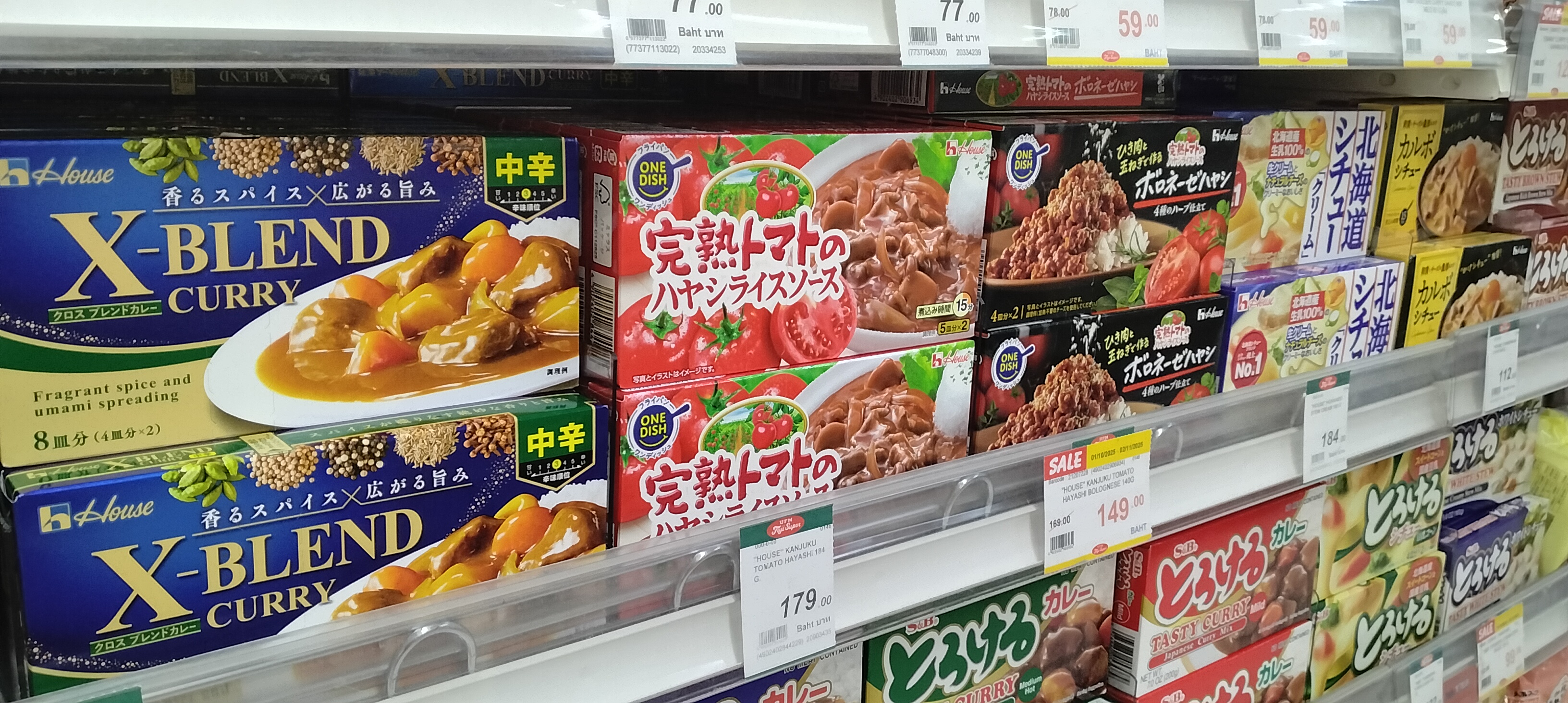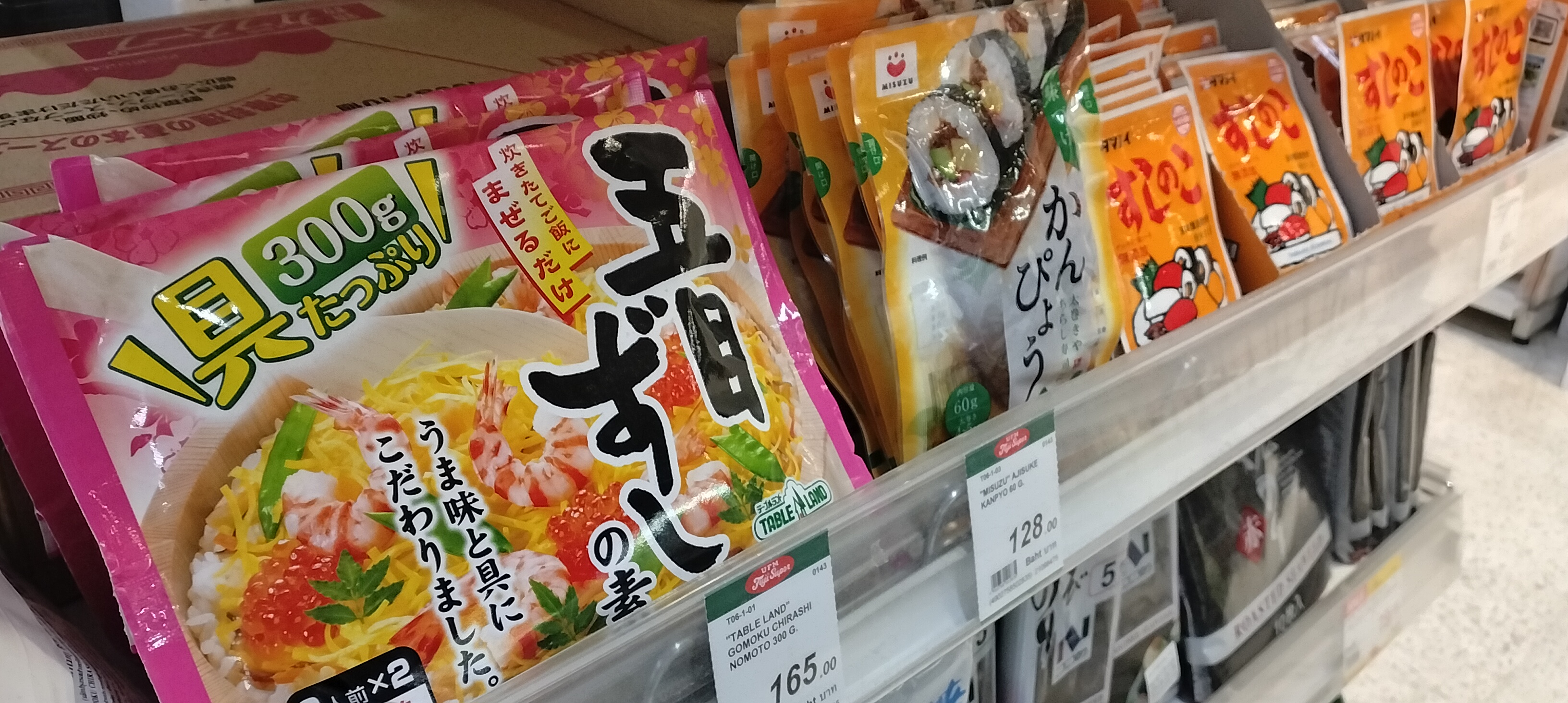
The transition from the end of the rainy season to the beginning of the cool season in November marks the arrival of New Rice. As farmers spread their harvest across concrete courtyards, the gentle wind carries the sweet scent of straw and a cool, soft breeze. This period is the season for new, fragrant rice, known for its soft, sticky texture. It evokes the warmth of freshly cooked rice steam kissing your face and nose. This early-season rice is delicious even when paired with simple dishes, such as rice mixed with mackerel (Pla Too).
In this new rice season, we want to introduce you to the story of Japanese rice grown in Thailand—a delicious, affordable staple that Thai people share a connection with in every Japanese dish, from sushi and curry to tonkatsu. It is a story of farmers whose dedication is no less than those who produce rice in Japan.

The Journey of Japanese Rice
The experimental cultivation of Japanese Japonica rice in Thailand began in 1964 by the Rice Department’s scientific division. The challenge lay in finding areas with the right temperature suitable for the rice to grow, flower, and form grains. Through testing, it was found that the upper North could grow the rice year-round, while the lower North, Central, and Northeast regions could only do so effectively during the dry, cooler off-season (Na Prang).
The Role of Thai-Grown Japonica
Japanese rice grown in Thailand is used for flour products (like mochi), as an ingredient in processed foods, sake, and is a common staple in Thai Japanese restaurants. However, despite Thailand's long-term study, exporting Japonica rice to Japan still faces a major hurdle: Japan's quality standards are much higher and more specific than general international standards, particularly the standards for taste designated for each individual rice variety. This is one reason why imported Japanese rice, though pricier, is still considered worthwhile for its guaranteed flavor profile.
Yet, this does not mean Thai-grown Japanese rice cannot deliver the authentic flavor. The varieties grown here—such as Koshihikari, Sasanishiki (ก.วก.1), and Akitakomachi (ก.วก.2)—are genuine Japanese varieties. Consumers can be confident that Japanese rice from Thai soil is perfectly suited for all authentic Japanese menus.

Beloved Thai-Grown Brands
1. Fuji Hikari: A pioneer in genuine Japanese rice in Thailand, cultivated organically in Chiang Rai’s fertile area with a chemical-free milling process. It is familiar to Thais through the pioneering Fuji Restaurant chain.
2. Komeya no Kome: A pioneer that continues its operation, focusing on the Akitakomachi variety using Japanese standards. It’s grown near Wat Rong Khun in Chiang Rai, an ideal location known for its cool climate and clean water.
3. Kaijae Akitakomachi: A versatile rice, with a perfect stickiness suitable for Onigiri, Donburi, or curry rice. It holds its shape well and is beautifully coated by sauce in every bite.
4. Minori Sasanishiki: One of the most easily accessible brands, Minori maintains high standards for freshness, distributing the rice within one month of milling.
5. Haruka: Haruka rice is a Japonica variety of Japanese rice grown in Thailand. It is delicious, soft, and affordable, and has long been favored by Thai people and small Japanese restaurants.
Dishes Best Enjoyed with Japanese Rice
To fully savor the simple delight of Japanese rice, here are easy menus featuring ingredients readily available:

1. Onigiri (Rice Balls): Portable, filled with creativity, and memories of outdoor lunches. The unique quality of Japanese rice—sticky enough to hold its shape but not too dense—allows the softness of the rice to truly shine.

2. Japanese Curry Rice (Kare Raisu): A rich curry sauce blanketing hot, sticky Japanese rice. The rice’s texture stays firm without dissolving or absorbing too much sauce, creating a perfect balance. Every home has a "secret ingredient" that makes their curry the "most delicious," a small source of pride known only to those who share that home-cooked meal.

3. Chirashi Sushi: A great option for beginners. This bowl of sushi rice is topped with easy, auspicious toppings like egg, cucumber, eel, or fresh fish. It’s easy to make, doesn't need perfect presentation, but remains visually stunning and full of flavor.

4. Donburi: A rice bowl topped with savory ingredients (chicken and egg, rich pork, or fresh seafood). The bowl shape is designed to keep the rice warm and allow it to absorb the savory sauce from the toppings, ensuring deliciousness until the last bite.

5. Ochazuke (Rice with Tea/Broth): Japanese rice’s firmness makes it perfect for this dish. Hot broth or green tea poured over rice is ideal for a light, comforting meal, perfect for leftover rice or a quiet late-night snack.
Japanese rice in Thailand is a vital bridge connecting two cultures through the word "Oishii" (Delicious) and soft rice nurtured by the love of farmers. Even though it crossed the sea to grow, it is still met with overwhelming love from Thailand, not unlike its homeland.
This November, we invite all who are interested in Japanese rice to try rice from Thai soil and enjoy its sticky softness, at a price that has long won the hearts of Thais. And you will feel that the love for rice, transmitted across seas, cultures, and time, is truly a boundless energy.
60 views